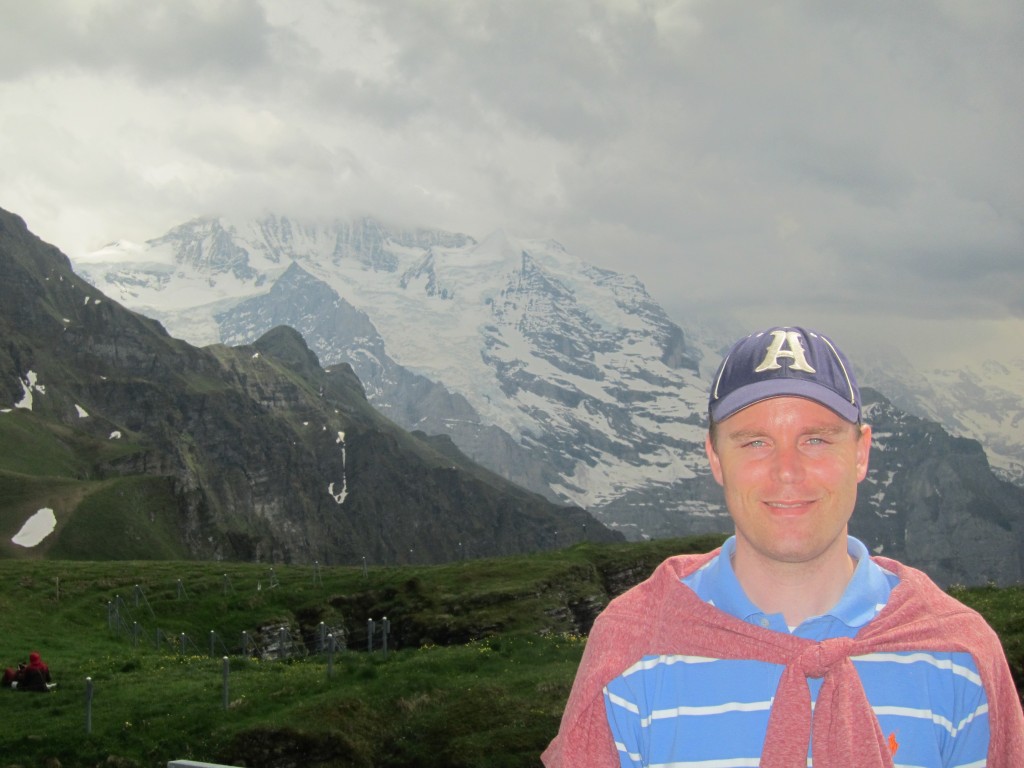My research group combines numerical modeling (deterministic, stochastic) and/or analytic solutions with small and large-scale measurement (direct and indirect observations), and inverse modeling (parameter estimation, data assimilation, model averaging, etc.) to improve theory, understanding and predictability of complex Earth systems. We engage in all aspects of the iterative research cycle (see figure below) and regularly develop new numerical, computational, statistical, and optimization approaches to reconcile complex system models with observations for the purpose of learning and scientific discovery and, thereby, enhancing the growth of environmental knowledge. We use distributed computing to permit inference of CPU-intensive forward models.
Our papers appear in a wide variety of different scientific journals, and describe methodological advances, and their application to problem solving in (alphabetic order) agriculture, avian biology, ecohydrology, ecology, fluid mechanics, geomorphology, groundwater, hydrogeophysics, hydrogeology, geophysics, geostatistics, surface hydrology, soil physics, vadose zone hydrology, and water resources.
Our current methodological work focuses on, (i) a new paradigm of process-based model evaluation (to help diagnose which components of the model are malfunctioning), (ii) likelihood-free inference (use of summary metrics in geophysics as a powerful and “objective” alternative to the rather “subjective” deterministic penalized least-squares inversions), (iii) Bayesian model selection (inference of marginal likelihood through multi-dimensional integration of the posterior distribution), (iv) emulation of CPU-intensive models (to permit inference of computationally demanding models), and (v) monitoring network design (real-time measurement selection to help discriminate among conceptual models).
More application oriented work includes (amongst others), (a) investigation of the environmental controls of photosynthetic capacity (ecology), (b) global-scale hydrologic modeling (hydrology), (c) uncertainty quantification of GEOS-5- L-Band radiative transfer parameters (remote sensing), (d) joint inference of multi-Gaussian permeability fields and their geostatistical properties (hydrogeology), (e) the biogeography and composition (particulate ratios) of marine plankton (ecology), (f) two- and three-dimensional subsurface characterization (geophysics), (g) scaling and prediction of soil hydraulic parameters (soil physics), and (h) geomorphological modeling of soil depths (geomorphology / sediment transport). Publications on these different topics are forthcoming.
We share freely all our work with others, and provide short-courses for those interested in numerical modeling and model-data analysis.
The iterative research cycle (scientific method) for a soil-water-atmosphere-transport model. The initial hypothesis is that the system can be described with a simple axi-symmetrical numerical model that uses Richards’ equation to describe water flow through the soil and tree trunk (plant) continuum. Experimentation then involves standard meteorological measurements such as precipitation, and other variables (temperature, vapor pressure deficit, global (net) radiation, wind speed) that determine the atmospheric moisture demand, and measurements of spatially distributed soil moisture and matric head, and the sapflux through the xylem, and tree trunk potential. The conceptual model is subsequently calibrated against these observations using methods such as DREAM and model-data analysis proceeds by analyzing the error residuals. This last step has proven to be the most difficult, and often ad-hoc decisions are being made on model improvement. Much emphasis in our work is on how to diagnose, detect, and resolve model structural errors. This is key to refining existing hypotheses, scientific discovery and learning. Note: in science and engineering the hypothesis often constitutes some numerical model which summarizes, in algebraic and differential equations, state variables and fluxes, all our knowledge of the system of interest, and the unknown parameter values are subject to inference using the data.
Short CV
2015 – present: Associate Professor, Civil and Environmental Engineering (CEE), University of California Irvine, USA
2015 – present: Associate Professor (Joint Appointment), Earth System Science (ESS), University of California Irvine, USA
2011 – 2014: Associate Professor (0.2 FTE), Faculty of Science (CGE), University of Amsterdam, Netherlands
2010 – 2015: Assistant Professor, Civil and Environmental Engineering (CEE), University of California Irvine, USA
2010 – 2015: Assistant Professor (Joint Appointment), Earth System Science (ESS), University of California Irvine, USA
2006 – 2009: J. Robert Oppenheimer Distinguished Postdoctoral Fellow, LANL, USA
2005 – 2006: Directors Funded Postdoctoral Fellow, LANL, USA
2000 – 2004: PhD in Science, University of Amsterdam, Netherlands
1994-1999: MS in Physical Geography, University of Amsterdam, Netherlands
Teaching
UC Irvine
2011 – present CEE-20: Problem Solving in Engineering using MATLAB: Undergraduate (Lecture videos can be found HERE)
2010 – present CEE-271: Unsaturated Zone Hydrology: Graduate (Lecture videos can be found HERE)
2011 – present CEE-290: Merging Models and Data: Graduate (Lecture videos can be found HERE)
International
Main Lecturer for a week long short-course on “Bayesian inverse modeling and data assimilation methods in the Earth Sciences“. Once or twice a year, at a different University worldwide. Look for more information under “Teaching / Outreach”
Editorial Boards
2008 – present: Vadose Zone Journal
2009 – present: Environmental Modeling & Software
2008 – 2015: Hydrology and Earth Systems Sciences
2010 – 2015: Water Resources Research
Other Professional Activities
2004 – present: Chair and Organizer of 30+ sessions at (inter)National conferences
2004 – present: About 80 invited talks and seminars at Universities, Inter(National) Meetings, and Labs.

